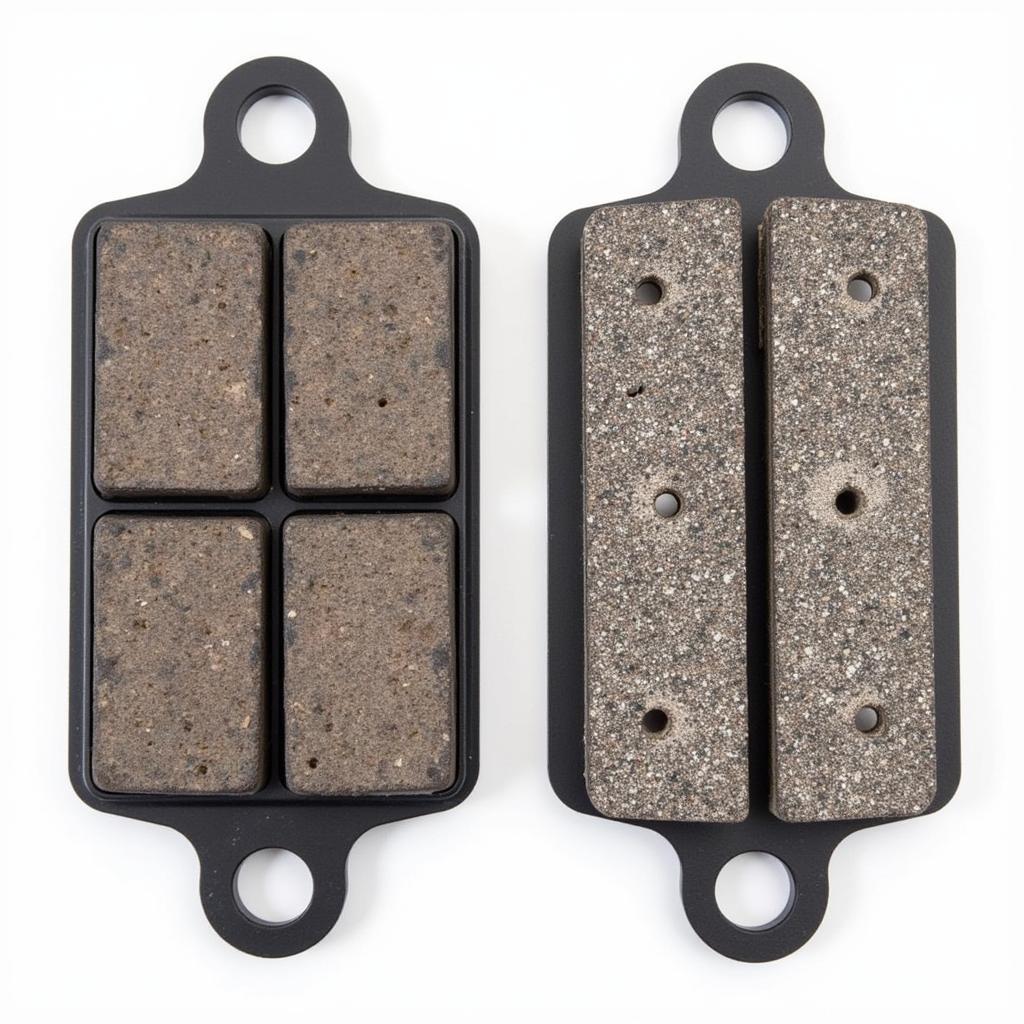You’re cruising down the road, enjoying the smooth ride of your E36, and suddenly you see it – the dreaded brake pad warning light. Don’t panic! This article will guide you through everything you need to know about the E36 brake pad warning, from understanding why it’s triggered to outlining the steps for diagnosis and repair.
Decoding the E36 Brake Pad Warning Light
The brake pad warning light on your E36 is part of a sophisticated system designed to keep you safe. It illuminates when the brake pad wear sensors, small metal tabs embedded within the brake pads, detect that your brake pads are wearing thin and need replacing.
 E36 Brake Pad Wear Sensor
E36 Brake Pad Wear Sensor
Why is My E36 Brake Pad Warning Light On?
While worn brake pads are the most common culprit, several other issues can trigger the brake pad warning light on your E36:
- Worn Brake Pad Sensors: Over time, the brake pad sensors themselves can become damaged or worn out, triggering a false warning.
- Faulty Brake Fluid Sensor: Your E36 also has a brake fluid level sensor. If the brake fluid level is low, it could indicate a leak in your brake system, and the warning light will illuminate.
- Electrical Issues: Occasionally, a short circuit or wiring problem within the brake pad warning system can cause the light to come on, even if the pads and sensors are fine.
“It’s crucial to remember that brakes are your car’s most important safety feature,” says master mechanic and BMW specialist, Hans Schmidt. “Never ignore a brake warning light. Addressing the issue promptly ensures your safety and prevents costly repairs down the line.”
Troubleshooting an E36 Brake Pad Warning
Before you start ordering new brake pads, it’s essential to diagnose the problem accurately:
- Check Your Brake Pads: The first step is to visually inspect your brake pads. Look for signs of wear, such as thin pad material or grooves in the pad surface.
 Worn E36 Brake Pads
Worn E36 Brake Pads - Inspect the Brake Pad Sensors: If the pads look good, inspect the brake pad wear sensors. Look for any damage to the sensor wires or the sensor itself.
- Check Your Brake Fluid: Open the brake fluid reservoir (refer to your owner’s manual for location) and check the fluid level. If the level is low, there might be a leak in your system.
- Seek Professional Help: If you can’t identify the issue or are uncomfortable working on your car’s braking system, seek help from a qualified mechanic specializing in BMWs.
What Happens if I Ignore the Brake Pad Warning Light?
Ignoring the brake pad warning light can lead to serious consequences:
- Reduced Braking Performance: Worn brake pads significantly reduce your car’s ability to stop effectively, increasing the risk of an accident.
- Damage to Brake Rotors: Driving with worn brake pads can damage the brake rotors, leading to costly repairs.
- Complete Brake Failure: In extreme cases, ignoring the warning light can lead to complete brake failure, putting you and others on the road at risk.
bmw 318i e36 brake pad warning light
How To Reset the E36 Brake Pad Warning Light
Once you’ve addressed the underlying issue triggering the warning light, the light should go off on its own. However, in some cases, you may need to reset the warning light manually. The process for resetting the brake pad warning light on an E36 can vary depending on the specific model year. Consult your owner’s manual or a qualified mechanic for the correct procedure.
Preventative Maintenance for Your E36 Brake System
“Regularly checking your brake fluid level and getting your brakes inspected at least once a year is a smart practice,” advises Schmidt. “Preventative maintenance can save you time, money, and potential headaches down the road.”
Here are some additional tips to keep your E36’s brake system in top shape:
- Avoid Hard Braking: Sudden and forceful braking puts unnecessary strain on your brakes. Practice smooth braking habits to extend the lifespan of your brake pads and rotors.
- Lighten Your Load: Carrying excessive weight in your E36 puts additional strain on the brake system. Travel light whenever possible.
- Quality Parts Matter: When it’s time to replace your brake pads or other components, always choose high-quality parts from reputable manufacturers.
brake system warning light honda civic
Conclusion
The E36 brake pad warning light is your car’s way of telling you it’s time to pay attention to your brakes. While worn brake pads are often the cause, it’s essential to diagnose the problem correctly to ensure the safety and longevity of your E36. If you’re ever unsure, seek help from a qualified BMW specialist to keep your driving experience smooth and safe.
